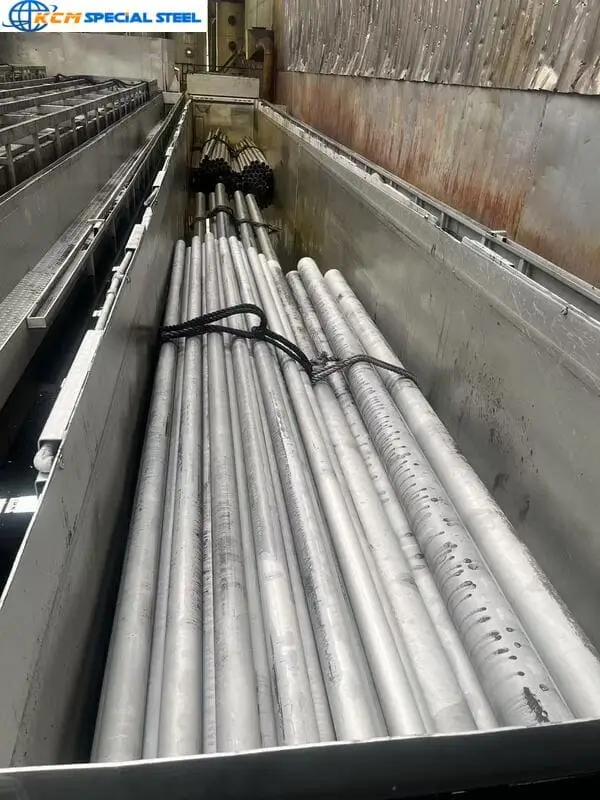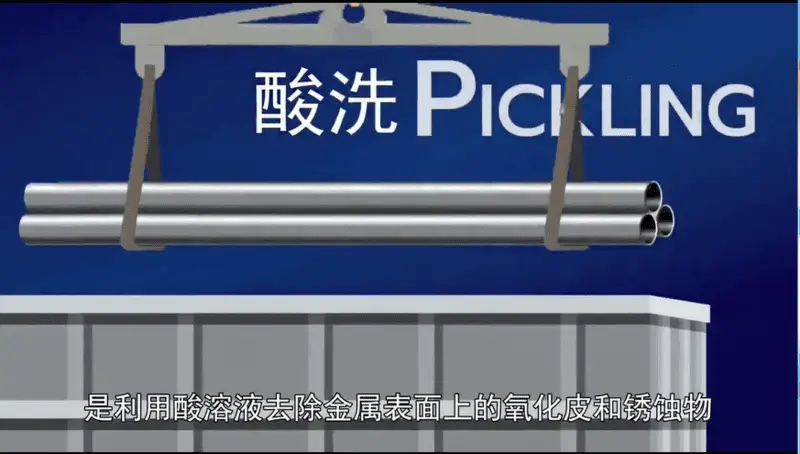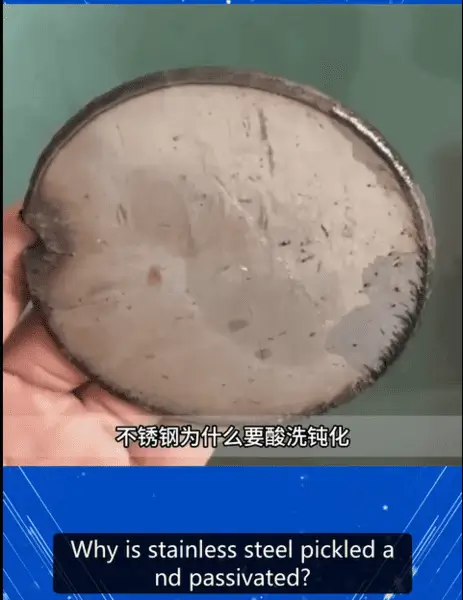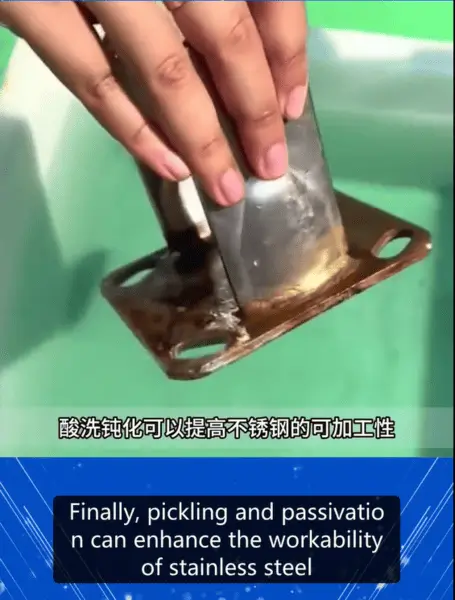Pickling/Passivation Boost Stainless Steel Performance
The Critical Role of Pickling and Passivation in Enhancing the Performance of Austenitic Stainless Steel
Abstract
stainless steel, renowned for its exceptional corrosion resistance, high-temperature stability, and superior mechanical properties, is extensively utilized across industries such as chemical processing, petrochemicals, nuclear energy, aerospace, and healthcare. However, its performance hinges on the integrity of its passive oxide layer. This article explores the necessity of pickling and passivation processes in optimizing stainless steel’s corrosion resistance, surface quality, and compliance with industrial standards. Technical mechanisms, practical applications, and comparative data are analyzed to underscore their indispensable role in engineering.
1. Introduction to Stainless Steel and Its Corrosion Resistance
Pickling/Passivation Boost Stainless Steel Performance, Austenitic stainless steel, primarily composed of chromium (16–26%), nickel (6–22%), and molybdenum (0–7%), derives its corrosion resistance from a thin, self-repairing chromium oxide (Cr₂O₃) layer that forms spontaneously in the presence of oxygen. This passive film, typically 1–3 nm thick, acts as a barrier against corrosive agents. However, during manufacturing processes such as welding, machining, or heat treatment, the passive layer is often compromised, exposing the material to localized corrosion, stress cracking, or premature degradation.
2. The Engineering Imperative for Pickling and Passivation
2.1 Surface Contamination and Its Consequences
Pickling/Passivation Boost Stainless Steel Performance Post-fabrication residues—including oils, iron particles, welding slag, and thermal oxides—pose dual threats:
- Aesthetic degradation: Discoloration, heat tint, and embedded contaminants mar the surface’s visual appeal.
Corrosion vulnerability: Residual impurities disrupt the passive layer, accelerating pitting, crevice corrosion, and stress corrosion cracking (SCC).
Table 1: Common Surface Contaminants and Their Impacts
Contaminant | Source | Effect on Stainless Steel |
|---|---|---|
Iron particles | Tooling, cross-contamination | Galvanic corrosion, rust staining |
Welding slag | Welding processes | Localized pitting, reduced weld integrity |
Thermal oxides (FeO) | High-temperature exposure | Loss of chromium-rich passive layer |
Oils/grease | Lubricants, handling | Bacterial growth, coating adhesion failure |
2.2 The Role of Pickling /Passivation Boost Stainless Steel Performance
Pickling involves immersing stainless steel in acidic solutions (e.g., nitric-hydrofluoric acid blends) to:
Dissolve contaminants: Remove embedded iron, scale, and welding residues.
Etch the surface: Strip 5–20 μm of the surface layer to eliminate chromium-depleted zones caused by thermal oxidation.
Uniform surface preparation: Ensure homogeneity for subsequent passivation.
2.3 Passivation: Restoring the Chromium Oxide Layer-Pickling/Passivation Boost Stainless Steel Performance
Passivation employs oxidizing agents (e.g., nitric acid, citric acid) to:
Accelerate oxide layer formation: Promote rapid reformation of a dense, continuous Cr₂O₃ film.
Enrich surface chromium: Remove iron oxides preferentially, leaving a chromium-rich surface (up to 20% Cr concentration).
Enhance electrochemical stability: Achieve a surface potential of up to +1.0 V (SCE), akin to noble metals like platinum.
Table 2: Comparative Analysis of Passive Film Properties
Parameter | Untreated Surface | Passivated Surface |
|---|---|---|
Chromium concentration | 10–12% | 18–20% |
Passive film thickness | <1 nm | 2–3 nm |
Pitting potential (Cl⁻) | +0.2 V (SCE) | +0.8 V (SCE) |
SCC resistance | Low | High |
3. Industrial Standards and Application-Specific Requirements
3.1 Regulatory Compliance-Pickling/Passivation Boost Stainless Steel Performance
Pressure vessels (GB150-1998): Mandates pickling and passivation for stainless steel containers in contact with corrosive media.
Medical devices (ASTM A967): Requires passivation to eliminate bio-contamination risks.
Nuclear systems: Demands ultra-high-purity post-treatment to prevent radioactive contamination.
Table 3: Industry-Specific Standards for Surface Treatment
Industry | Standard | Key Requirement |
|---|---|---|
Petrochemical | GB150-1998 | Acid pickling for weld zones and surfaces |
Aerospace | AMS 2700 | Nitric acid passivation for fatigue resistance |
Food processing | EHEDG | Electropolishing + passivation for hygiene |
3.2 Case Study: Nuclear Reactor Components-Pickling/Passivation Boost Stainless Steel Performance
In nuclear applications, untreated surfaces risk chloride-induced SCC, which can lead to catastrophic failure. Post-weld pickling followed by electrolytic polishing reduces surface roughness (Ra <0.2 μm), minimizing crevice nucleation sites.
4. Mechanisms of Pickling and Passivation: A Scientific Perspective
4.1 Kinetic and Thermodynamic Principles-Pickling/Passivation Boost Stainless Steel Performance
Selective dissolution: Acids dissolve iron oxides (FeO, Fe₃O₄) faster than chromium oxides, enriching the surface with chromium.
Passive film dynamics: The film is not static; it self-repairs in oxidizing environments but degrades in reducing conditions (e.g., chloride-rich settings).
4.2 Advanced Passivation Techniques-Pickling/Passivation Boost Stainless Steel Performance
Electrochemical modification: Enhances passive film layering (e.g., CrO₃/Cr₂O₃ hybrids) via controlled voltage application.
Citric acid passivation: Eco-friendly alternative to nitric acid, achieving comparable corrosion resistance without hazardous fumes.
5. Economic and Functional Benefits
Extended service life: Passivated equipment in chemical plants lasts 10–15 years vs. 2–3 years for untreated systems.
Reduced maintenance costs: Smooth surfaces resist fouling, lowering cleaning frequency.
Aesthetic value: Critical for architectural and consumer goods (e.g., kitchenware, façades).
6. Limitations and Alternatives
Non-critical applications: Decorative indoor items may skip passivation if corrosion risks are negligible.
Mechanical polishing: Abrasive methods can achieve Ra <0.5 μm, reducing the need for chemical treatments.
7. Conclusion
Pickling and passivation are not mere optional treatments but fundamental processes to unlock stainless steel’s full potential. By addressing surface defects, restoring corrosion resistance, and aligning with stringent industrial norms, these methods ensure reliability in high-stakes environments. Future advancements in eco-friendly chemistries and precision surface engineering will further solidify their role in material science.
References
ASTM International. (2023). Standard Practice for Cleaning, Descaling, and Passivation of Stainless Steel Parts. ASTM A967.
GB/T 150-2011. (2011). Pressure Vessels. China Standard Press.
Olsson, J., & Landolt, D. (2020). Passive Films on Stainless Steels: Chemistry, Structure, and Growth. Corrosion Science Journal.
International Atomic Energy Agency. (2019). Surface Treatment Guidelines for Nuclear Components. IAEA-TECDOC-1891.




